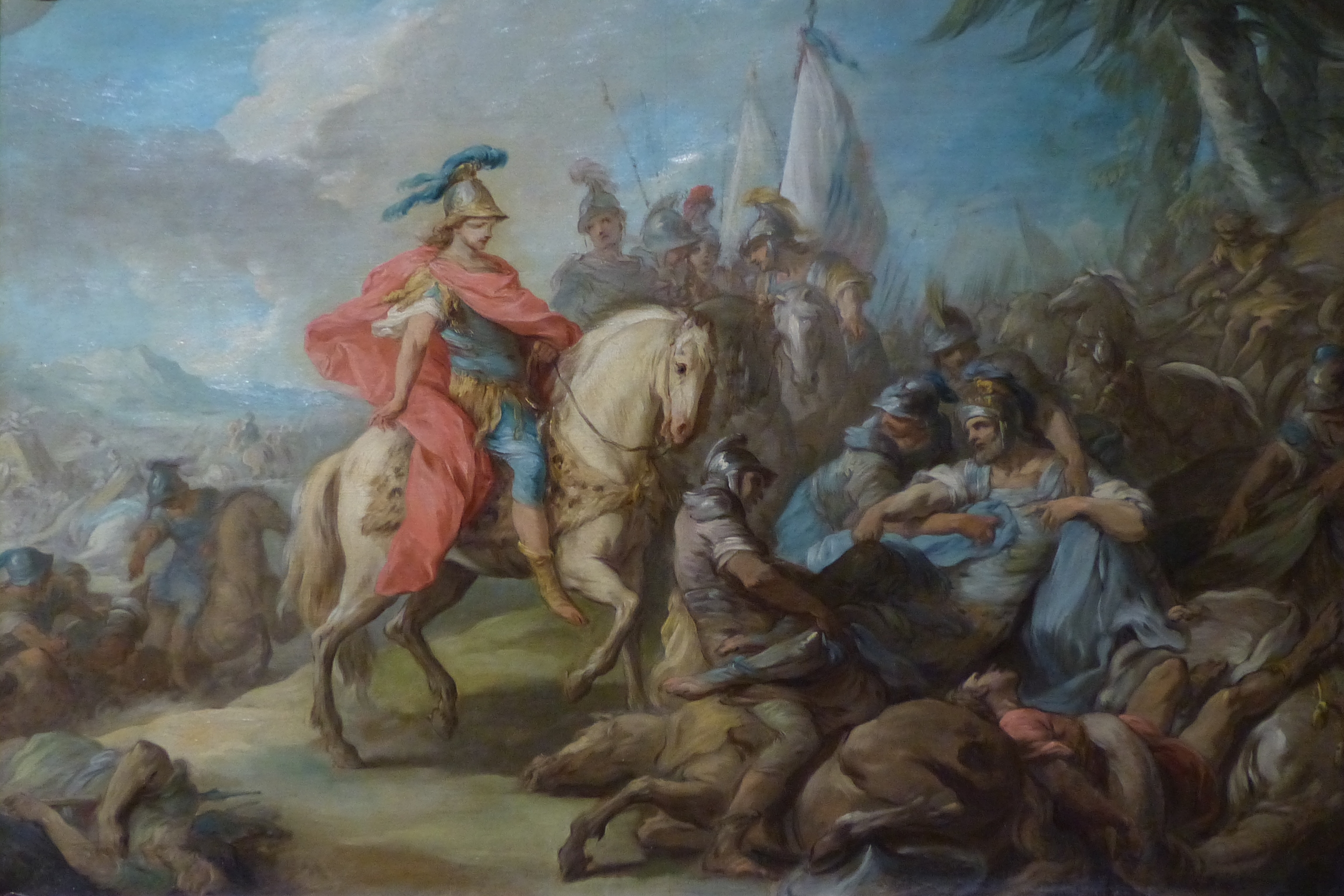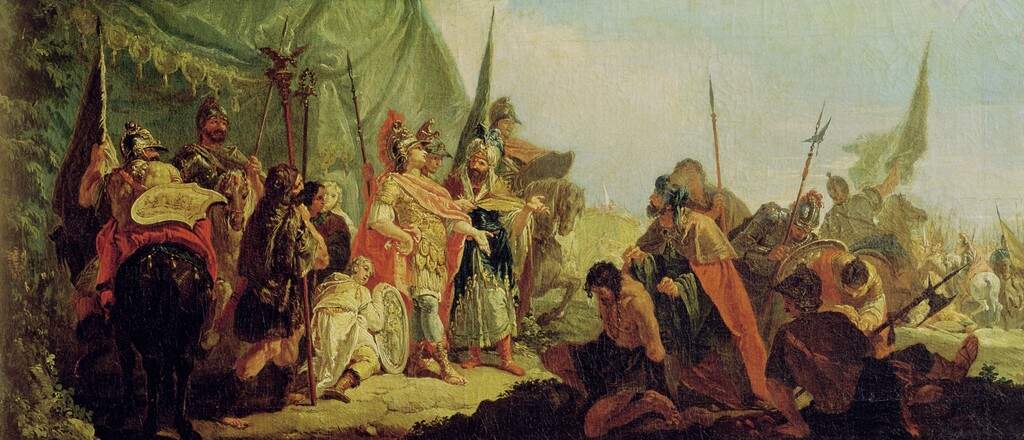

But the country of India itself proved far vaster than the Macedonians had imagined. To discourage potential attacks and to impress the inhabitants of Pakistan and northern India, Plutarch reported that Alexander ordered his blacksmiths to forge special weapons and equipment that “far exceeded the normal size and weight.” He left these huge items in his camps around the countryside to frighten the populace. The gigantic stature of Porus (and the Celts) may have inspired Alexander’s psychological ruse of war after the great battle at the Hydaspes River. Averaging about 6-6.5 feet tall, the Celts were not truly giants-but they certainly seemed so to the smaller Greeks. Alexander stalked away, muttering that the Celts’ answer seemed to trumpet their own sky-scraping height. “That the sky might fall on their heads!” came the booming reply. The historian Arrian wrote that Alexander, hoping to hear his own name, asked “these people of great stature and arrogant disposition” to name their greatest fear. In 335 BC when he was consolidating his power in the Balkans, Alexander met with the robust, tall Celts of the Danube and Adriatic Sea region. Porus was not the first giant encountered by Alexander and his army. The two rulers became friends and Alexander gave him command of his former kingdom as his vassal. “Like a king!” was Porus’s booming reply. Alexander politely asked his king-sized prisoner how he wished to be treated. Porus was captured he’d lost a staggering 23,000 of his men. The Macedonians emerged victorious after a long and bloody battle. The Porus’s high turban and majestic bearing amplified the impression of grandeur, as did his seat on the back of an extra-large Indian elephant, about 11 feet at the shoulder. According to Alexander’s biographer Plutarch, the monarch’s “great size and powerful physique made him appear as suitably mounted on an elephant as an ordinary man looks on a horse.” Porus was nearly 7 feet tall, towering over Alexander, who was about 5 feet, average size for a Greek man of that era.

Already taken aback by Porus’s 200 war elephants, the Macedonians were awe-struck by the prodigious height of the Hindu king. Münster, Sebastian.By Adrienne Mayor (Wonders and Marvels contributor)Īlexander and his men waded across the raging Hydaspes River during a violent lightning storm to surprise the vast army of 35,000 men commanded by king Porus of India (326 BC). Alexander the Great and the Mystery of the Elephant Medallions, California: University of California Press, 2003, 217pgs. The demise of the Persian empire),Amsterdam:Athenaeum - Polak & Van Gennep, 2004. Alexander de Grote - De ondergang van het Perzische rijk (Alexander the Great. However, Malayketu was killed in the Battle of Gabiene in 317 BC.Īrrian, The Campaigns of Alexander, book 5. Īfter his assassination, his son Malayketu ascended the throne with the help of Eudamus. Porus is supposed to have held the position of a Macedonian subordinate ruler until he was assassinated, sometime between 321 and 315 BC, by the Thracian Eudamus' agents after the death of Alexander ( Diodorus Siculus).

Porus was said to be "5 cubits tall", either the implausible 7½ ft (2.3 m) assuming an 18-inch cubit, or the more likely 6 ft (1.8 m) if a 14-inch Macedonian cubit was meant. ‘Like a king,’ Porus replied, ‘Everything is contained in the words “like a king”.‘ (Πάντα εν τω βασιλικώς ένεστι.) This answer so appealed to Alexander that he restored the captive to his realms, and Porus became a vassal. After he was defeated by Alexander, Alexander reportedly asked him how he wished to be treated. Puru fought the battle of the Hydaspes River with Alexander in 326 BC. Unlike his neighbour, Ambhi (in Greek: Omphius), the King of Taxila, Porus resisted Alexander the Great. Its capital may have been around what is currently the city of Lahore.

Porus, the Greek version of the Indian names Puru or Purshottam, was the ruler of a Kingdom that was located between what is now known as the Jhelum and the Chenab rivers (in Greek sources called Hydaspes and Acesines) in the Punjab. Alexander and Porus by Charles Le Brun, 1673


 0 kommentar(er)
0 kommentar(er)
